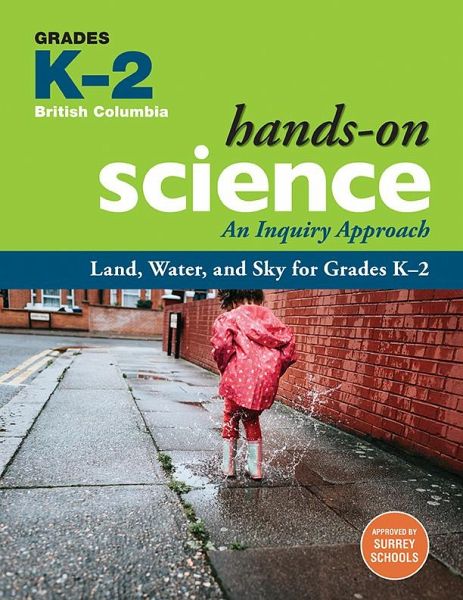
Land, Water, and Sky for Grades K-2
An Inquiry Approach
Versandkostenfrei!
Versandfertig in über 4 Wochen
66,99 €
inkl. MwSt.

PAYBACK Punkte
33 °P sammeln!
Land, Water, and Sky for Grades K-2 from Hands-On Science for British Columbia: An Inquiry Approach completely aligns with BC's New Curriculum for science. Grounded in the Know-Do-Understand model, First Peoples knowledge and perspectives, and student-driven scientific inquiry, this custom-written resource: * emphasizes Core Competencies, so students engage in deeper and lifelong learning * develops Curricular Competencies as students explore science through hands-on activities * fosters a deep understanding of the Big Ideas in science Using proven Hands-On features, Land, Water, and Sky for G...
Land, Water, and Sky for Grades K-2 from Hands-On Science for British Columbia: An Inquiry Approach completely aligns with BC's New Curriculum for science. Grounded in the Know-Do-Understand model, First Peoples knowledge and perspectives, and student-driven scientific inquiry, this custom-written resource: * emphasizes Core Competencies, so students engage in deeper and lifelong learning * develops Curricular Competencies as students explore science through hands-on activities * fosters a deep understanding of the Big Ideas in science Using proven Hands-On features, Land, Water, and Sky for Grades K-2 contains information and materials for both teachers and students including: Curricular Competencies correlation charts; background information on the science topics; complete, easy-to-follow lesson plans; digital reproducible student materials; and materials lists. Innovative new elements have been developed specifically for the new curriculum: * a multi-age approach * a five-part instructional process-Engage, Explore, Expand, Embed, Enhance * an emphasis on technology, sustainability, and personalized learning * a fully developed assessment plan for summative, formative, and student self-assessment * a focus on real-life Applied Design, Skills, and Technologies * learning centres that focus on multiple intelligences and universal design for learning (UDL) * place-based learning activities, Makerspaces, and Loose Parts In Land, Water, and Sky for Grades K-2 students investigate characteristics of the land, water, and sky. Core Competencies and Curricular Competencies will be addressed while students explore the following Big Ideas: * Daily and seasonal changes affect all living things. * Observable patterns and cycles occur in the local sky and landscape. * Water is essential to all living things, and it cycles through the environment.


